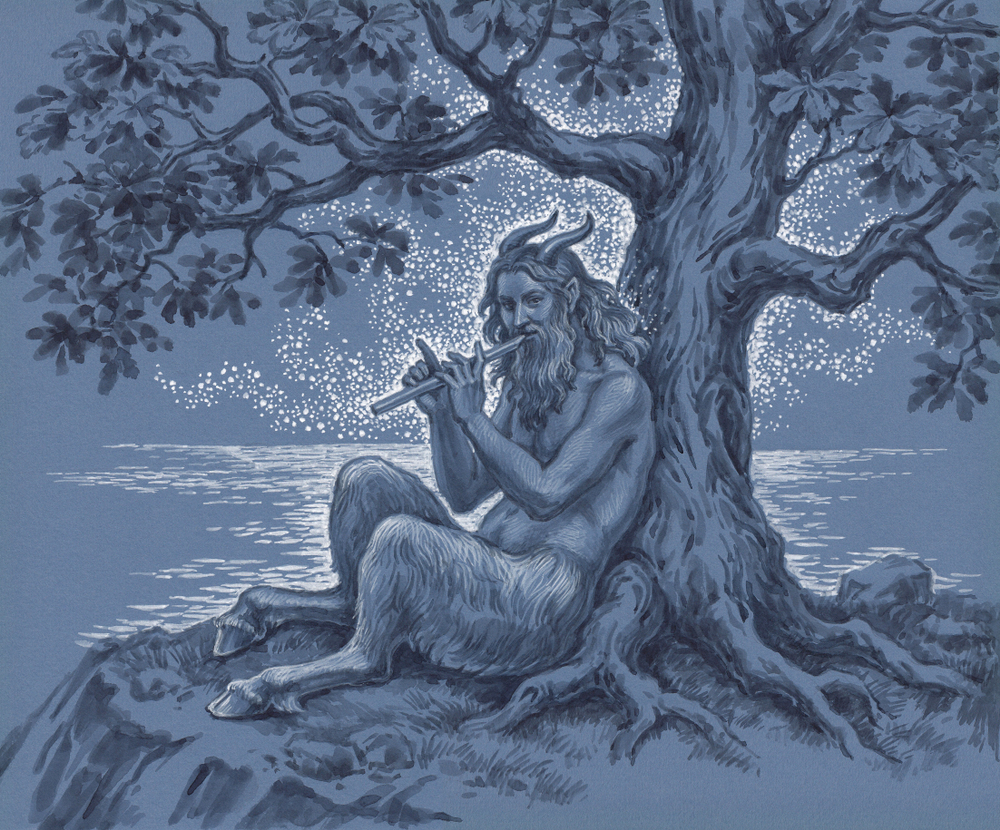
Gods and goddesses are typically depicted as being a mix of benevolent and destructive. Though myths and names vary from culture to culture, the power harnessed by deities is usually used in grand and awesome ways. However, this is not always the case. For as many wise gods there might be working alongside some cosmic plan, there are many looking to cause a bit of disruption just for the sake of it. Take a look at some of the more absurd deities throughout history and learn more about the weirder side of the gods.
Pan
To get started, let’s take a look at one of the more familiar of the figures on this list. Pan is one of the lesser gods in the pantheon of the Ancient Greeks. He is depicted as a satyr, meaning he has the legs and horns of a goat and the torso, arms, and head of a man. Associated with shepherds, pastoral tunes, and forests, Pan is best known for having lecherous and lustful urges. Essentially, the god would try to mate with literally anything that moved, from women to men to spirits to animals.
Interestingly, Pan is one of the only absurd deities to have been killed. The exact circumstances of his death in myth have never been recorded or uncovered. Still, historians believe the modern depiction of the Christian devil with horns and goat legs originates from interpretations of Pan.
Sheela Na Gigs
Over the centuries, statues have been found across the British Isles depicting a figure known as “Sheela Na Gigs.” Translated from Old Irish, her name roughly means “the old hag of the breasts,” though there are some translations referring to her as “Julia of the breasts.” Though specifics are limited, the depictions of Sheela Na Gigs always show her with exaggerated breasts and vulva. The statues have been found in a variety of places, from clearings in forests and pastures to cathedrals and churches. Though considered grotesque by modern standards, the widespread nature of the statues suggests ancient popularity.
It is believed that a statue of Sheela Na Gigs was meant to ward off evil spirits and demons. This is why historians think that the goddess was often found near churches and other buildings that did not usually house art with sexual undertones. Though her original worshipers are long gone, the pagan goddess has seen a revival in modern pagan circles.
Loki
Perhaps best known these days after being depicted in the Thor films by Marvel, the Scandinavian god Loki is one with a penchant for chaos. He’s considered a god of mischief, and stories about Loki are varied. Some tales have him acting as a thorn in the sides of the rest of the gods, while other stories showcase his benevolence and desire to help. However, most tales agree that Loki could change his shape and the shape of others, making him a force to be reckoned with no matter what his disposition might have been.
Dionysus
To round things out, let’s take a trip back to Greece and the god Dionysus. The god of wine and revelry was introduced to the Greek pantheon quite late, which historians believe signified the god being assimilated into the culture by way of a conquered nation. Whatever his origin, Dionysus inspired passion in his worshippers. Records of his cults suggest that the priestesses who paid homage to him did so by dancing and drinking until they were filled with fury and physically tore apart the bodies of any who spoke ill of him. This takes religious fanaticism to a whole different level!
Though history shrouds the exact truth in a haze that none can fully see through, it is hard to deny that previous generations believed some wild things about their absurd deities. Though attitudes have changed with modern religions, it is still interesting to ponder the influence of the spirits of mischief and madness.

